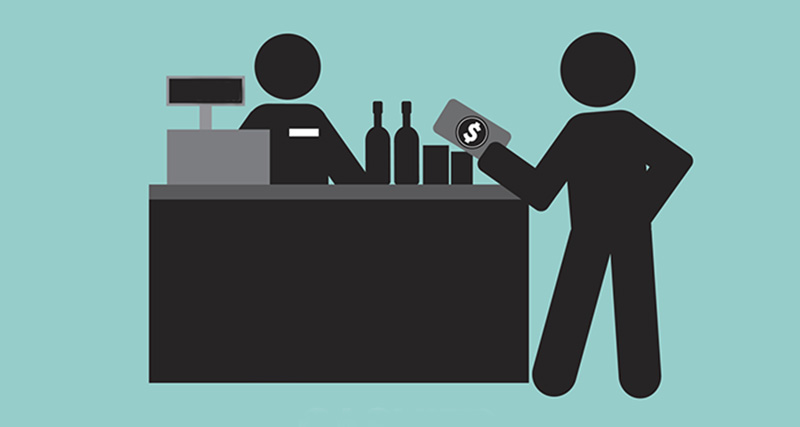A growing number of business owners are hopping on board the customer loyalty train. According to Harvard Business Review, the average business loses 50% of its customers every five years. so it’s easy to understand why.
There’s also been a rapidly increasing number of people joining loyalty programs – 3.3 billion across the country to be exact. And this is working in every participating business’ favor. A Deloitte survey shows that businesses who “take meaningful steps to drive customer loyalty are 88% more profitable than their competitors who do not.”
If you also want to reap the benefits of increased repeat business, here are five things you need to know about customer loyalty programs:
1. The right kind of loyalty program for your business
Customer loyalty marketing is one of the fastest growing strategies amongst small businesses and remains a strong marketing focus for big box businesses. But, there are several types of loyalty programs or strategies, and they all have varying costs. How do you know which is right for your business?
All loyalty marketing strategies and programs have different degrees of effectiveness. A paper or digital punch card is an example of a basic but low-cost strategy. More robust loyalty programs, which are more costly but also more effective, typically include a suite of marketing tools including:
- Email, text message, and/or mobile app notification capabilities used to send promotions, offers, and updates to specific groups of people based on their behavior
- Data about your customers’ visit and purchase behavior
- The ability to customize and create tiered, enticing, and relevant points and reward structures
- An easy way to collect and build a database of customer information via touchscreen tablet, or software on your point of sale
- An app or online forum for users to monitor points and rewards
As a whole, these tools used together help businesses communicate the right offers and messages at the right time. At Fivestars, these features help small businesses increase repeat business by up to 70%, increase spend per visit, the number of full-priced visits, (again by 70%), win back lost customers, and build relationships with valued customers.
These results can also be gradual. At Fivestars, business owners using our program get the average customer to visit two additional times per year. That may not seem like much, especially over an entire year. However, if the average customer spends around $10 per visit, those two additional annual visits result in an extra $20 per customer. The average small business owner using Fivestars has 1.2K loyalty program members each. Times that $20 per your 1.2K members, and that’s $24,000 additional sales made per year because of a loyalty program.
As a business owner, you have to determine whether you’re willing to invest more upfront (including the ramp up period) for a loyalty program with more effective long-term results, or whether you’d prefer loyalty strategies with less impact, but at a lower cost.
2. The benefit of having a loyalty program
There are dozens of benefits to a loyalty program, but there are two advantages that owners really like:
For starters, loyalty programs bring customers back to your store, more often, and increase spend per visit. By using the program to reward your most loyal customers with targeted messages and offers, customers come back again and again, and more often.
Most business experts agree that increasing customer retention is more beneficial than spending money attracting new customers. In fact, a two percent increase in customer retention has the same effect as decreasing expenses by 10 percent.
The second biggest benefit to a loyalty program is the collection of customer information. With a loyalty program in place, you can learn about customer habits, preferences and needs. You can use this information to offer targeted promotions that grab a customer’s attention at the right place and time.
For example, let’s say you’ve learned that your most valued customers come to your coffee shop every morning during rush hour and orders a small coffee. Knowing this you can try to “upsell” them, or entice them to buy something more. For example, a promotion that offers ‘a free small coffee with the purchase of a baked good’ encourages customers to visit and spend money on something new.
3. When you should invest in loyalty program
A loyalty program can be set up anytime. There are some advantages to setting up a program before opening though. A grand opening creates a lot of buzz and foot traffic, which makes the perfect opportunity to get customers to sign up.
However, plenty of businesses have set up a program after being in business for years or even decades and have success.
4. How giving away free merchandise profits your business
Some business owners are skeptical about giving away free merchandise. If you’re just giving things away for free, how are you making money?
By offering customers a freebie, you’ve enticed a customer to come back to your store. Odds are, they’ll not only redeem their reward, but they’ll pick up a few other things while they’re shopping.
In fact, our Fivestars analysis shows, as we mentioned, that businesses see a 70% percent increase in store visits purely by offering reward or promotion, however, those promotions also increase the number of additional full-priced visits at a later date by 70 percent. Sure, your initial offer includes a discount or free item, however, it also drives additional full price spending that may have never occurred otherwise.
Keep in mind; you control what you offer as a reward too. Your rewards don’t have to eat your bottom line. For example, rather than providing loyal customers with a 20% off coupon, offer the coupon with a minimum purchase.
The promotions you create are also building trust. By rewarding loyal customers, they’re more apt to become your brand advocates rather than check out your competition.
5. The most common reasons for a loyalty program to fail
You’re probably thinking that most loyalty programs tank because customers aren’t interested. The biggest culprit for a loyalty program’s demise is the idea that one can “set it and forget it.” A loyalty program is only as good as the business owner that implements it.
You have to watch your metrics, create and send targeted promotions, thoroughly train employees, and constantly add new customers to the program.
Now, that’s not to say that a loyalty program should take up every afternoon. Loyalty programs do have automation options and easy-to-read charts that make maintenance easy, but a commitment is still required for success.
Have any questions about loyalty programs? We’d be happy to help! Let us know in the comments below.






Leave a Comment